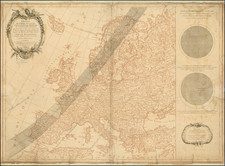Search
Nicole-Reine Lepaute (née Étable de la Brière) was born on January 5, 1723, in the Burgundy region of France. She was a French astronomer and mathematician known for her significant contributions to astronomy during the 18th century, a time when female participation in scientific disciplines was far from commonplace. Her innate curiosity, rigorous intellect, and diligent application of her skills to the advancement of astronomical knowledge make her a fascinating figure in the history of science.
Little is known about Lepaute's early life and education. It is believed that she was mostly self-taught. However, she demonstrated a profound interest in scientific pursuits from a young age. Her marriage to Jean-André Lepaute, a prominent clockmaker to the King, in 1749, became a turning point in her life. Together, they constructed an astronomical clock, which brought her to the attention of the notable astronomer, Jérôme Lalande in 1753. This connection would shape her career and contribute significantly to her subsequent accomplishments.
Lepaute and Lalande formed a partnership that lasted for many years. Their first major joint endeavor was calculating the trajectory of Halley's Comet, which was due to pass near Earth in 1759. Using Newtonian mechanics and observational data, they accurately predicted the comet's perihelion (the point in its orbit closest to the sun). This successful prediction cemented Lepaute's reputation as a skilled and accomplished astronomer.
Lepaute went on to predict the solar eclipse of April 1, 1764, a feat that further demonstrated her exceptional ability to calculate and predict celestial phenomena. Notably, she also calculated the timing of the 1761 transit of Venus.
Between 1760 and 1774, Lepaute produced ephemerides for the Connaissance des Temps, an almanac published by the French Academy of Sciences. This publication was a crucial resource for astronomers and navigators, providing information on the positions of celestial objects at different times. Her work required complex mathematical calculations and detailed knowledge of the movements of celestial bodies.
Lepaute's contributions to astronomy were recognized by her contemporaries. Lalande lauded her as "the most distinguished female astronomer France had produced". Her death in 1788 was mourned by the scientific community.
Posthumously, Lepaute's contributions to astronomy have been further recognized. The lunar crater 'Lepaute' and the asteroid '4122 Lepaute' are named in her honor, ensuring her name continues to be associated with the field she so passionately pursued.

